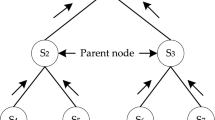Abstract
In the Internet of Things(IoT) environment, the exponential growth of variety and number of sensors brings computing and transmission pressure to data fusion. In general, reducing some dimensions and using related dimension substitutes can significantly reduce the amount of data collected and transmitted, thus improving the fusion efficiency. Traditional methods typically capture a static correlation relationship and model complex substitution function between sensors. However, the correlation relationship commonly changes, as demonstrated in our smart home case study. Therefore, a lightweight yet dynamic correlation modeling approach is more efficient. Aiming to capture and maintain dynamic correlation for data fusion, a Lightweight Sensor Data Fusion based on Dynamic Correlation Maintence Algorithm is proposed. It comprises two stages: a static configuration stage and a dynamic reduction stage It comprises two stages: a static configuration stage and a dynamic reduction stage. In the static configuration stage, sensors are grouped based on their data correlation, and substitution functions are generated by linear regression. In the dynamic reduction phase, changes in sensor correlation are detected using concept drift detection, triggering the regeneration of grouping or substitution functions. Case study on smart home and experimental analyses show that our algorithm achieves higher data reduction rates and accuracy than static correlation and temporal correlation methods.
Access this chapter
Tax calculation will be finalised at checkout
Purchases are for personal use only
Similar content being viewed by others
References
In: Rani, S., Bhambri, P., Kataria, A., Khang, A., Sivaraman, A.K. (eds.): Big Data, Cloud Computing and IoT: Tools and Applications. CRC Press (2023)
Mahdavinejad, M.S., Rezvan, M., Barekatain, M., Adibi, P., Barnaghi, P., Sheth, A.P.: Machine learning for internet of things data analysis: a survey. Digit. Commun. Netw. 4(3), 161–175 (2018)
Ahmed, E., et al.: The role of big data analytics in internet of things. Comput. Netw. 129, 459–471 (2017)
Dias, G.M., Bellalta, B., Oechsner, S.: A survey about prediction-based data reduction in wireless sensor networks. ACM Comput. Surv. (CSUR) 49(3), 1–35 (2016)
Sadri, A.A., Rahmani, A.M., Saberikamarposhti, M., Hosseinzadeh, M.: Data reduction in fog computing and internet of things: a systematic literature survey. Internet Things 20, 100629 (2022)
Vitali, M., Peng, X., Pernici, B.: An adaptive monitoring service exploiting data correlations in fog computing. In: Yangui, S., Rodriguez, I.B., Drira, K., Tari, Z. (eds.) ICSOC 2019. LNCS, vol. 11895, pp. 383–389. Springer, Cham (2019). https://doi.org/10.1007/978-3-030-33702-5_29
Salim, C., Mitton, N.: K-predictions based data reduction approach in WSN for smart agriculture. Computing 103(3), 509–532 (2021)
Jain, K., Agarwal, A., Kumar, A.: A novel data prediction technique based on correlation for data reduction in sensor networks. In: Bansal, P., Tushir, M., Balas, V.E., Srivastava, R. (eds.) Proceedings of International Conference on Artificial Intelligence and Applications. AISC, vol. 1164, pp. 595–606. Springer, Singapore (2021). https://doi.org/10.1007/978-981-15-4992-2_56
Liu, Z.: An effective conflict management method based on belief similarity measure and entropy for multi-sensor data fusion. Artif. Intell. Rev. 56(12), 15495–15522 (2023)
Gawde, S., Patil, S., Kumar, S., Kotecha, K.: A scoping review on multi-fault diagnosis of industrial rotating machines using multi-sensor data fusion. Artif. Intell. Rev. 56(5), 4711–4764 (2023)
Lu, J., Liu, A., Dong, F., Gu, F., Gama, J., Zhang, G.: Learning under concept drift: a review. IEEE Trans. Knowl. Data Eng. 31(12), 2346–2363 (2018)
Bodik, P., Hong, W., Guestrin, C.: Intel lab data. http://db.csail.mit.edu/labdata/labdata.h
Barrenetxea, G.: Sensorscope data. http://sensorscope.ee.ic.ac.uk/.(2019)
Ismael, W.M., Gao, M., Al-Shargabi, A.A., Zahary, A.: An in-networking double-layered data reduction for internet of things (IoT). Sensors 19(4), 795 (2019)
Tan, L., Wu, M.: Data reduction in wireless sensor networks: a hierarchical LMS prediction approach. IEEE Sens. J. 16(6), 1708–1715 (2015)
Acknowledgement
This research was funded by the Key Project of the National Natural Science Foundation of China: U1908212.
Author information
Authors and Affiliations
Corresponding author
Editor information
Editors and Affiliations
Rights and permissions
Copyright information
© 2024 The Author(s), under exclusive license to Springer Nature Singapore Pte Ltd.
About this paper
Cite this paper
Zhang, H., Xie, W., Yin, B., Na, J., Zhang, B. (2024). Lightweight Sensor Data Fusion Based on Dynamic Correlation Maintence - A Case Study on Smart Home. In: Huang, DS., Zhang, X., Zhang, C. (eds) Advanced Intelligent Computing Technology and Applications. ICIC 2024. Lecture Notes in Computer Science(), vol 14879. Springer, Singapore. https://doi.org/10.1007/978-981-97-5675-9_39
Download citation
DOI: https://doi.org/10.1007/978-981-97-5675-9_39
Published:
Publisher Name: Springer, Singapore
Print ISBN: 978-981-97-5674-2
Online ISBN: 978-981-97-5675-9
eBook Packages: Computer ScienceComputer Science (R0)




